Text
THE 6 FREE MARKETING TOOLS EVERY MARKETER NEEDS TO USE
Are you aware of the top marketing tools out there that not only help you get your job done better, but are completely FREE? There are a number of excellent free marketing tools, and we’ve compiled some of the top in the categories that help you master your marketing. Whether you add all or a few to your marketing toolbox, you’ll reap the benefits of these resources right away and work smarter, not harder.
Project Management: Trello
Lead Generation: Hubspot
Design: Canva
Content: Answer the Public
SEO: Google Free Business Profile and Google Analytics
Social Media Management: Buffer
PROJECT MANAGEMENT: TRELLO
This highly visual organization tool is a master at project management. It lays everything out intuitively on “boards” reminiscent of an old-school desk blotter and designed to manage projects, workflows, and tasks, from the big picture down to the finest detail. With the free version of Trello, you can create unlimited boards that contain a project or process, lists encompassing all tasks and divided into “To Do,” “Doing,” and “Done” (or your own custom process), and smaller, movable “cards” with the information you need to accomplish these tasks, tied to deadlines and assigned doers.
Trello helps you boost your productivity. It keeps everyone moving, with spaces to comment on the cards, and add files and checklists. It also integrates with Slack, Dropbox, Outlook, Gmail, Salesforce, and more, with “power-ups,” or plug-ins, that expand your capabilities. The free version gets you unlimited cards, built-in automation, due dates, mobile and desktop apps, unlimited activity logs, templates, and unlimited power-ups. Then if you find you’re needing more, it’s a reasonable jump in monthly rate for more robust options.
LEAD GENERATION: HUBSPOT
Hubspot is known for many things to many marketers. It’s a robust CRM platform with highly effective marketing, sales, and service tools. The software is king at lead generation. It helps marketers attract potential visitors and leads through inbound marketing, ushering them through the buyer’s journey, and converting them into customers.
While HubSpot’s capabilities are wide-ranging and complex, you can take advantage of its CRM tools in a free suite that includes email marketing, live chat, forms, pop-ups, ads, landing pages, reports, and more. This version has some very helpful features; marketers can add more information about incoming leads with data gleaned from the internet, populating charts with social profiles, job titles, where they came from online, and what they viewed before they filled out their form. You’ll be able to track these potential customers when they return to your site as well, and since each action is mapped, you can track timing too. The free version of HubSpot also provides analytics so you know which of your pages, offers, and traffic sources are pulling the highest conversions. You’ll see the number of visits before customers buy and identify other trends in site navigation so you can optimize your site.
Hubspot also offers paid subscriptions, but these free capabilities are highly effective, so you can always add on later if you’d like:

DESIGN: CANVA
In the way that self-publishing content through social media has revolutionized the media industry, Canva has similarly given people a free platform with which to create beautiful brochures, business cards, banners, infographics, cards, logos, designs for promotional items, social media images, posters, newsletters, videos and so much more. Started in 2013, the platform offers many tools for free, including 250,000+ templates, 100+ design types (social media posts, presentations, letters, and more), free photos and graphics, additional team members, and 5GB of cloud storage, plus access to easy tutorials and other great resources, including a robust blog for marketing, design, and branding. You can level up to Pro and Enterprise for more features, which are free for classrooms and nonprofits.
Canva offers excellent tools for laying out and designing professional-looking pieces even if you’re not a professional designer. With this design tool, you can create postcards for your upcoming sale, Instagram images for branding, or a flyer with your services. Its intuitive interface has made good design more accessible for all of us.
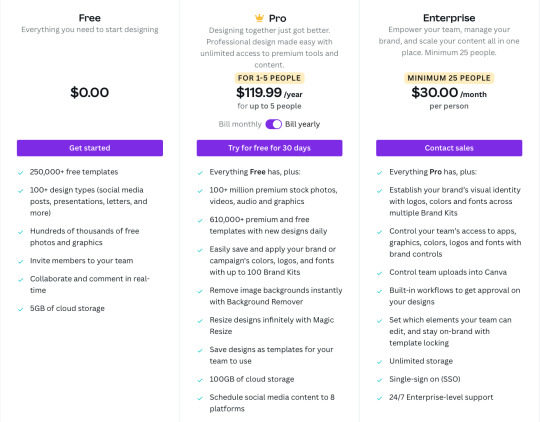
CONTENT: ANSWER THE PUBLIC
This content-generating tool is so simple that you’ll want to play with it for hours. It makes a great party game too, especially since it’s powered by a perky robot. The premise is simple: just enter the topic you’re interested in covering for your content strategy, and it will (within seconds), deliver an elegantly charted image containing more search terms than you can possibly use. The way it works is by collecting the autocomplete data from the 3 billion+ daily Google searches and mapping them out into “what,” “how,” “where,” and more.
You get an unfiltered look into the minds of searchers, to learn the information that they’re really seeking—and sometimes it’s surprising. You can leverage this content to create the next headlines and search terms for your blogs and social media posts. If your audience feels like you’re reading their minds, it’s because you pretty much are.
With Answer the Public’s free version, you can conduct more than 500,000 searches a month; if you need more you can also upgrade to their other plans:
SEO: GOOGLE BUSINESS PROFILE AND GOOGLE ANALYTICS

THE GOOGLE FREE BUSINESS PROFILE
The Google Free Business Profile is a no-brainer. If you have not yet completed this one-time task, head there right now and get your business set up. This tool will direct all users who find you on Google to the critical information they seek: your phone number, website, address, hours, ratings, description, posts, health and safety measures, women-owned/Black-owned/veteran-owned and other status, and more. It includes a map so users can see your location at a glance and a spot for product and services photos. You can create offers, respond to reviews, send and receive direct messages, and post FAQ answers. Since people will be looking for you on their phones and other devices, this first impression is crucial—and it’s 100% free.
GOOGLE ANALYTICS
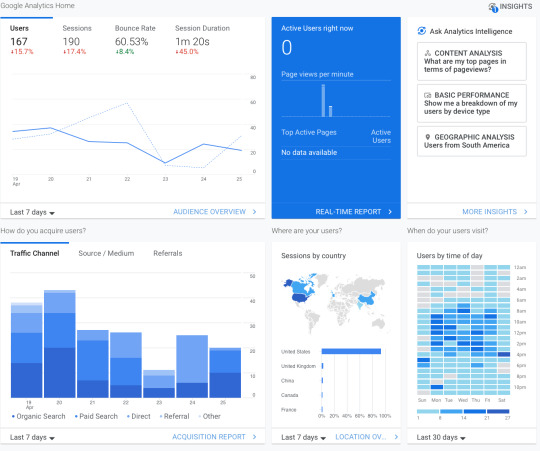
To track how well your website is performing, Google Analytics is an excellent tool. It measures real-time traffic and lets you set custom goals like purchases or signups. You can delve into revenue, return on investment (ROI) and return on ad spend (ROAS). When you link it to Google Ads, you can track ad performance and use their advanced machine learning capabilities to optimize advertising campaigns, based on cost per acquisition (CPA), ROI, or ROAS. With this information, you’ll learn which channels are performing best, see where your customers are coming from (devices and geographically), and use this information to optimize your site. Not bad for a free tool!
Related: 6 Metrics Your Boss Actually Cares About
SOCIAL MEDIA MANAGEMENT: BUFFER
Who has the time to continually post on social media? You do, now that you have a free tool that does it for you! With Buffer, you can schedule your social media posts across social sites in advance, so they’re set.
Their free option gives you up to three channels and their profiles, with ten social posts per queue (and no monthly or yearly limit), basic publishing tools, and a landing page builder for you to send leads to. They even shorten links automatically to save you characters. Buffer is a great way to manage the posts you’ve been meaning to post but haven’t gotten around to yet. It’s your social media assistant, automated.
If you like working with Buffer (and you will), you can opt for their next available plan, which lets you look at analytics, use their engagement tools, build a shopping landing page, and integrate with other apps:

These free marketing tools are all so helpful, and their paid versions often include even more helpful capabilities. We recommend trying them for free and if you find they’re really working for you, they may be worth an additional investment since they’re providing a strong return. Check them out and let us know how you do!
And if you need help integrating any of these tools or would like more marketing muscle in your toolbox, reach out to our team. We’re suckers for time-saving tools, and we love to help make marketing easier, smarter, and of course, better.
#socialmediamanagement#marketingtips#graphicdesigntips#chatgpt#socialmediamarketing#socialmediamarketing101#captionsforinsta#graphicdesigndaily#instagramcaptions#aitools#midjourney#ai#artificialintelligence#graphicdesigncommunity#canva#graphicdesigns#captionideas#marketing#digitalmarketing#photoshoptutorials#socialmediatip
18 notes
·
View notes
Text
11 cost-free marketing tips for small businesses
No marketing agency? No problem. Even beginners can implement great marketing tactics without spending a dime. Here are 11 small business marketing tips that you and your team can implement right now.
1. Turn leads into customers with drip campaigns
A drip campaign is a sequence of emails that send automatically on a scheduled timeline when triggered by a preselected online action that you choose. Don’t worry, it’s simpler than it sounds. For instance, if you own a yoga studio, you could have a welcome email instantly sent when a new lead joins your email list. Over the next week, they may receive emails introducing them to your instructors, describing your class offerings, and offering a free first class.
Drip campaigns keep leads engaged when they’re actively in need of your product or service—and they’re easy to create. Email marketing tools like AWeber and Pabbly, which offer automation with their free plans, can guide you through the process of creating each email in your sequence and setting up your trigger. After that, emails will engage your leads without much extra effort on your part.
2. Re-engage customers with email newsletters
Most marketers identify email marketing as the best way to achieve customer retention. By sending regular emails with valuable content, you can keep existing customers (who spend 31% more than new customers) coming back.
A weekly or monthly email newsletter is a great start. Build loyalty by regularly updating customers on your business, current promotions, industry news, and more. Build your first email marketing campaign using these basic email marketing strategies.
3. Offer value through blogging
Blogs are excellent content marketing tools that allow you to position yourself as an industry leader. You can build trust by writing in-depth blog posts answering specific questions your target audience may have. For example, a landscaping business may write a blog post about artificial grass installation, detailing what it is, how to do it, how much it costs, and how professionals can help.
To ensure your blog reaches the right readers, use search engine optimization (SEO) tactics. Inserting keywords—for example, “artificial turf” and “artificial grass installation”—throughout your post, linking to other pages on your website, and linking to external sites with high domain authority can help you rank higher on search engine results pages.
4. Optimize your site for best results
Another key SEO tactic is website optimization. Search engines don’t just take your content into consideration when determining your rank; they also consider how easy your site is to use. Make sure your site is mobile-friendly, your navigation is well-organized, and your web pages load fast. Pro tip: Reducing file sizes can help.
5. Boost engagement with video content marketing

Video is expected to make up over 82% of consumer internet traffic by 2022. Plus, Facebook and YouTube—two major platforms for video—are the world’s most popular social networks, while TikTok is quickly rising.
You don’t need professional video editing skills to take advantage of this online marketing tactic (or even go viral). With just a smartphone camera, you can use video to:
Do live Q&As with potential clients
Give followers a behind-the-scenes look at your business
Explain a process (like how to fix a clog for plumber marketing)
Do a product demo
6. Start conversations with social media marketing
No digital marketing conversation is complete without mentioning social media, which 72% of U.S. adults use. From Facebook and LinkedIn to Twitter and Snapchat, social media platforms drive conversations, which help build brand awareness and relationships with clients.
Beyond publishing social media posts that offer value to your followers, make sure you’re engaging with your potential clients. Respond to comments and direct messages (DMs), share posts you’re tagged in, and join trending conversations relevant to your brand.
7. Generate word of mouth with a referral program
Even with the power of the internet, word-of-mouth marketing is still a powerful marketing tool. More than 80% of consumers trust recommendations from family or friends, which means direct referrals can help you get some of the highest quality leads.
Don’t wait for clients to refer you on their own. Use your email marketing tool to automate a follow-up email request within a day or two after a client buys from you. To incentivize your customers, offer rewards like gift cards or discounts for successful referrals.
8. Amplify satisfied customers with reviews
Most shoppers trust online reviews as much as recommendations from family and friends. When a client gives you a positive review online, they’re basically referring thousands of people to you at once. But if you want to keep getting great reviews, you have to respond to all your reviews.
Get a free Yelp Page
Promote your business to local customers.Claim your free page
9. Partner with local businesses
A great way to generate more referrals is by partnering with other brands. Work only with reputable brands offering complementary services so you can share exclusive referrals. As an example, a carpet cleaning company may partner with housekeeping and window cleaning services. This tactic helps you reach leads actively in need of your product or service.
10. Build a brand that sells itself
No matter which of our marketing tips for small business owners you add to your marketing plan, excellent branding should be part of all your efforts. A consistent brand experience can help you gain loyal clients, build trust, and help consumers remember your business. Get started with small business branding by:
Using the same visual branding (colors, logo, font, etc.) across all marketing channels
Using the same tone of voice for social media, customer support, and beyond
Sending the same key messages in all your marketing campaigns
11. Enhance your marketing with a CRM
Customer relationship management tools (CRMs) help you organize your client contact information, details about past interactions, and more all in one place. With a CRM, you can offer seamless, highly personalized client experiences. By collecting client data over time, you can better target your campaigns and understand your existing customer base. And when a client reaches out to you as a result of your campaigns, anyone on your team can instantly look up client information and provide personalized service.
Plenty of free CRMs are available to help small businesses maximize their marketing efforts.
#digitalbusiness#businesscoach#personalbrand#femaleentrepreneur#femaleentrepreneurs#savvybusinessowner#savvybusinessowners#entrepreneur#marketingtips#marketingdigital#marketingconsultant#marketingideas#marketing101#marketingstrategies#onlinepresence#digitalmarketingtips#personalbranding#marketingadvice#socialmediastrategy#socialmediastrategist#socialmediamarketer#instagramstrategy#instatips#marketinghelp#igtips#instabusiness#insta
1 note
·
View note
Text
1. Digital marketing
It’s difficult to overestimate the importance of digital marketing in today’s business world, even when it comes to small businesses. In 2021, the industry reached a market size of $155.3 billion in the US alone [1].
Digital marketing covers a broad range of strategies, from search engine optimization (SEO) and email campaigns to social media and influencer marketing. As the eCommerce world continues to grow, more online businesses are seeking the expertise of marketers to help them reach new customers and boost their conversion rates and turn them into blog income.
Whether you have a business degree or consider yourself social media savvy, digital marketing offers a lot of potential. You can narrow down your focus into a micro-niche, such as affiliate marketing or social media management, and turn your blog into a valuable resource regarding a variety of different topics.

If you decide to monetize your blog with affiliate programs, you’ll find plenty of relevant products and services to promote. This includes marketing tools, such as SEO plugins and email lists and platforms.
2. Blogging and making money online
Blogging has become so popular in recent years that there’s actually a large blog niche dedicated to helping people break into this industry. In 2020, there were over 31 million bloggers in the US [2].
You’ll also find plenty of blogs that help people make money online. This can involve anything from blogging and freelance writing to working as a virtual assistant or starting your own online business.

If you’ve been blogging for a while now, this is one profitable niche you can explore. In recent years, bloggers and influencers have come to play an important role in the digital marketing world. In fact, the global market value of influencer marketing reached 13.8 billion dollars in 2021 [3].
With more people exploring blogging as a source of income, you can share your expert tips and advice to help them succeed. You could show them how to write content that converts or drive traffic from social media channels such as Pinterest.
When it comes to monetizing your content, you can start by promoting affiliate products, such as writing courses or SEO tools that can help people grow their blogs. You may even want to consider launching your own blogging course or hosting paid webinars.
3. Health and fitness
Online fitness classes have grown in popularity during the pandemic, with many people having no option but to exercise at home [4]. However, studies have shown that nine in ten Americans who exercise regularly will continue to work out at home, even after gyms have reopened [5].
If you’re a health professional, you can take advantage of this growing trend and a new target audience by starting your own fitness blog. Thanks to the nature of this industry, you’re not restricted to only writing blog posts. In fact, you can create all sorts of content, from workout videos to fitness courses, and one-on-one training sessions or tutorials on proper technique.

This niche presents plenty of opportunities to make money. You can work with brands to promote products, such as fitness equipment and clothing. You might even offer an online health program or sell a subscription to your workout videos.
4. Personal finance and investing
People are always looking for ways to manage their money more effectively. In fact, data by Google shows that mobile searches related to financial planning and management have grown by over 70% in the last two years. The same data also shows that there’s been a significant increase in investing and stock-related app searches [6].
Personal finance can therefore be a lucrative blogging niche. As a financial advisor, you can help people manage their money wisely, whether by saving for retirement or making the right investments.

The FIRE niche (Financial Independence, Retire Early) has also been very popular and will continue to be in 2023 and beyond, with lots of blogs focused on helping people plan and achieve FIRE.
However, if you’re helping people save money and spend responsibly, you may be wondering how you can convince them to make purchases through your blog. The trick is to sell something that can help them make more money in the long run.
In other words, you’ll need to present your product as an investment. For example, you can create an online course on your WordPress blog to help people master the stock market. You could even host webinars or give individual financial advice.
5. Recipes and food
Food is an evergreen topic, and one of the most profitable blog niches. It also offers various sub-niches to explore, from quick and easy meals to information on specific diets.
One food topic that has become increasingly popular in recent years is home cooking. In fact, in the midst of the pandemic, interest in online cooking classes skyrocketed by over 1,177% [7].

However, this doesn’t mean it’s difficult to break into the market of the food bloggers. You’ll just need to get a bit creative, especially if it’s your first blog, such as by putting your own twist on popular dishes or sharing innovative recipes.
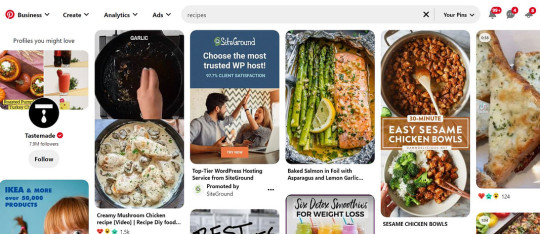
When it comes to monetization, there are various options you can explore. For example, you can partner with food brands and create recipes using their products. If you want to earn a passive income through your blog, you could sell your own printable cook books or give live-streamed cooking classes.
If you want to get started, we have a dedicated guide on how to start a food blog.
6. Personal development and self-care
Self-care has become a popular trend in recent years. These unusual times have made people more attuned to their mental wellness, leading to a growing interest in personal development and wellbeing.
However, 80% of Americans intend to continue practicing self-care even after the pandemic [8]. Moreover, a recent analysis by Google shows that interest in personal development is no longer a “New Year trend”, and users are continuously searching for queries related to wellness [9].
If you’re a trained psychologist, a wellness coach, or counselor, you may want to consider delving into the self-care industry. There are a variety of topics you can write about, from morning routines and stress management to mindfulness techniques and journaling:
#lamps#chandelier#lustre#linen#neutraldecor#niches#beige#balivilla#lingedemaison#mediterraneanvibes#bohocorner#interiorgoals#balihome#balivibes#bohome#baliinteriors#tropicalhome#terrasse#architecture#dreamhome#baliinspired#decohome#decorationinterieur#interiordesign#architecturedesign#interiorinspiration#mediterraneanhome#nichecommunity#nichepost#newpost❤
3 notes
·
View notes
Text
DREAM BUSINESS IDEAS

#entrepreneurlifestyle#entrepreneurs#businessideas#timemanagement#businessmoney#businessmotivation#businessopportunity#entrepreneurship#passiveincome#entrepreneurmindset#timemanagementtips#financialeducation#passiveincomestream#businessminded#businesspassion#businesscoach#businessowner#investmentstrategies
1 note
·
View note
Text
1. Eliminate Your Debt
If you're trying to save money through budgeting but still carrying a large debt burden, start with the debt. Not convinced? Add up how much you spend servicing your debt each month, and you'll quickly see. Once you're free from paying interest on your debt, that money can easily be put into savings. A personal line of credit is just one option for consolidating debt so you can better pay it off.
2. Set Savings Goals
One of the best ways to save money is by visualizing what you are saving for. If you need motivation, set saving targets along with a timeline to make it easier to save. Want to buy a house in three years with a 20 percent down payment? Now you have a target and know what you will need to save each month to achieve your goal. Use Regions savings calculators to make your goal!
3. Pay Yourself First
Set up an auto debit from your checking account to your savings account each payday. Whether it's $50 every two weeks or $500, don't cheat yourself out of a healthy long-term savings plan.
4. Stop Smoking
No, it's certainly not easy to quit, but if you smoke a pack and a half every day, that amounts to nearly $3,000 a year you can realize in savings if you quit. According to the Centers for Disease Control, the percentage of Americans who smoke cigarettes is now below 20 percent for the first time since at least the mid-1960s ��� join the club!
5. Take a "Staycation"
Though the term may be trendy, the thought behind it is solid: instead of dropping several thousand on airline tickets overseas, look in your own backyard for fun vacations close to home. If you can't drive the distance, look for cheap flights in your region.
6. Spend to Save
Let's face it, utility costs seldom go down over time, so take charge now and weatherize your home. Call your utility company and ask for an energy audit or find a certified contractor who can give you a whole-home energy efficiency review. This will range from easy improvements like sealing windows and doors all the way to installing new insulation, siding or ENERGY STAR high-efficiency appliances and products. You could save thousands in utility costs over time.
7. Utility Savings
Lowering the thermostat on your water heater by 10°F can save you between 3-5 percent in energy costs. And installing an on-demand or tankless water heater can deliver up to 30 percent savings compared with a standard storage tank water heater.
8. Pack Your Lunch
An obvious money-saving tip is finding everyday savings. If buying lunch at work costs $7, but bringing lunch from home costs only $2, then over the course of a year, you can create a $1250 emergency fund or make a significant contribution to a college plan or retirement fund.
9. Create an Interest-Bearing Account
For most of us, keeping your savings separate from your checking account helps reduce the tendency to borrow from savings from time to time. If your goals are more long-term, consider products with higher yield rates like a Regions CD or Regions Money Market account for even better savings.
10. Annualize Your Spending
Do you pay $20 a week for snacks at the vending machine at your office? That's $1,000 you're removing from your budget for soda and snacks each year. Suddenly, that habit adds up to a substantial sum.
1 note
·
View note
Text
How To Advertise Your Business on Social Media

1. Set Business Goals
You need to understand what you want out of your social media strategy before it can be effective.
When you create an ad campaign on a social media platform, you’ll often need to choose your advertising objective. Those can be divided into three main categories with subcategories:
Awareness
Reach
Consideration
Drive traffic
Engagement
Lead generation
Downloads
Clicks
Conversion rates
Make a purchase
Another important aspect of setting goals is determining a timeline for them. That’s where a social media calendar comes in.
Posting new content regularly keeps your audience engaged and improves your organic reach. Determine a posting schedule, and stick to it.

2. Gather Data
Today’s social media trends rely on being relatable. To understand what your audience relates to, you’ll need to gather data. Social media should feel authentic but have concrete research.
Where can you gather data about your audience?
You can start with information from your website via Google Analytics. Take notice of when your audience is most active, the posts they engage with, and their demographics.
Facebook, Twitter, and Instagram’s integrated tools can also be a valuable source of data. You will need a business account to gain access to raw information about your engagement.
One social media advertising tip for gathering data is to use a social media analytics tool like Hootsuite. These tools can simplify managing your social media account by monitoring your brand’s engagement, clicks, and reach.
3. Figure Out How Your Audience Spends Their Time Online
It can be overwhelming to think about optimizing your business profile on every single social media channel.
Here’s the good news:
You don’t have to.
The best social media advertising tip is to focus on where most of your audience spends their time online.
Consider the kind of content that best serves your audience’s interests and your business. Platforms like Instagram and Pinterest work well for visual content. Facebook and LinkedIn are better for longer information, and YouTube is ideal for videos.
Marketers should target different platforms based on audience demographics and age.
Be sure to take a look at the Pew Research Center’s 2021 demographics data of social media users.
4. Optimize Your Profile
One of the simplest ways to kickstart your social media presence is to fill out your profile completely.
A quick social media advertising tip for your profile is to create a business hashtag and include it in your bio so customers can find content relevant to your brand. You should also:
Fill out all your information.
Follow relevant accounts.
Understand which hashtags are relevant to your business and which aren’t.
Upload eye-catching and branded profile images.
Send traffic from your website and newsletter to your social media posts.
5. Create Engaging Content
Social media can sometimes feel like a science, which is why it’s essential to remember that creating high-quality content is more important than obsessing over the exact time to post.
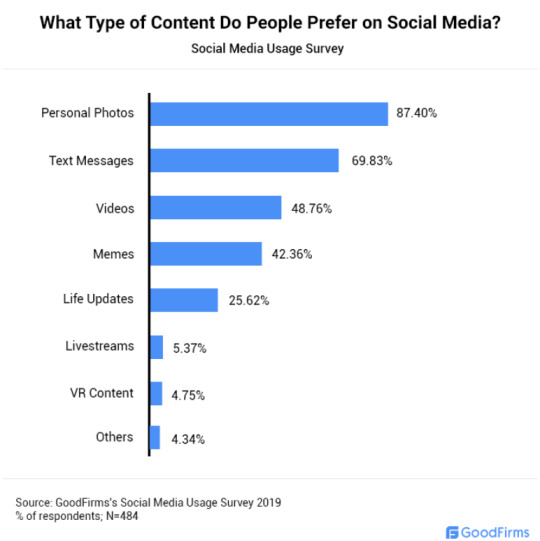
In addition to highly relevant, funny, and visual content, social media is perfect for interactive content.
6. Encourage Interaction
Building relationships with your audience is a major benefit of social media. Interaction on your content is also a positive sign to social media algorithms, which can help your posts get discovered organically.
To gain followers and increase your engagement, try an interactive post like a giveaway, a contest, or a poll. Don’t underestimate the power of the age-old social media advertising tip of ending your post with a question. This call to action (CTA) subtly prompts users to comment and boosts engagement.
Interaction is a powerful aspect of social media because it empowers you to learn more about your audience’s likes and helps you improve as a business.
Don’t forget to share followers’ content, especially when they mention or use your brand. That increases engagement and makes your brand more relatable.
7. Understand Your Advertising Options
Once you have a solid understanding of what works organically on your social media, it may make sense to dive into paid advertising options. Let’s take a look at several social networks:
Facebook
Facebook Ads offers highly targeted advertising options, as it tracks 86% of audience data. Many businesses already have a Facebook page, so users are familiar with interacting with brands there.

You can target an audience based on several metrics like behavior, demographics, and interests. Facebook pioneered a method called lookalike audiences, which lets you target ads based on a known audience.
#socialmediamanagement#marketingtips#marketingstrategy#marketingstartegies#instagrammarketingtips#socialmediamarketingagency#marketingtool#instagramgrowthhacks#instagramgrowth#instatips#igtips#instagramtip#digitalmarketingtrending#instagrantips#instagrammarketing#iggrowth#digitalmarketingtools#instagramalgorithm#digitalmarketingagency#instagrambusiness#instagramcoach#socialmediamarketingtips#personalbrand#personalbrandingconsultant#personalbrandingcoach#personalbrandingtips
1 note
·
View note
Text
The Most Visited Websites

#socialmediamanagement#marketingtips#marketingstrategy#marketingstartegies#instagrammarketingtips#socialmediamarketingagency#marketingtool#instagramgrowthhacks#instagramgrowth#instatips#igtips#instagramtip#digitalmarketingtrending#instagrantips#instagrammarketing#iggrowth#digitalmarketingtools#instagramalgorithm#digitalmarketingagency#instagrambusiness#instagramcoach#socialmediamarketingtips#personalbrand#personalbrandingconsultant#personalbrandingcoach#personalbrandingtips
1 note
·
View note
Text
Most In-Demand Programming Languages

You don’t want to waste your time. If you’re going to put aside the time and energy needed to learn new programming languages, you want to make sure, without a doubt, that the ones you choose are the most in-demand programming languages on the market.
After all, if you’re trying to start (or advance) a career in software development, you’ll need to be at the front of the metaphorical class. You’ll need to know which programming languages are popular, which are useful and which are up-and-coming on the market — and then set yourself up to learn them.
Not sure where to start? Don’t worry; we’ve already done the heavy lifting for you, and looked through developer and market data from the past several years to identify trends and draw conclusions that will help you plan for your programming education. In this article, we’ll walk you through the 11 most in-demand programming languages and give you a few pointers on how to learn them.
But before we get started, let’s recap how we built this list in the first place. When we sat down to figure out what the most in-demand programming languages might be, we had two primary research questions:
Which languages are in demand right now?
Which ones are growing in popularity and will be in demand soon?
You can probably guess the rationale behind our first question. While following trends isn’t always the best way to figure out which languages to prioritize, a language’s popularity can indicate its prominence in the market. Here’s a general rule of thumb for you — the more used or common a language is, the more likely it is that a developer (i.e., you!) will need to deal with it at work.
Next, we considered which skills are poised to become the most sought-after programming languages on the market. To do so, we dug into Stack Overflow’s developer surveys from the last two years and focused on:
The languages that developers report they use and want to continue using
The languages that developers aren’t using yet, but are interested in using
By looking at these trends, we aimed to gain a better understanding of which languages will become popular in the years ahead.
We found that Rust, Python and Typescript all topped Stack Overflow’s list for the most-loved languages in 2019 and 2020, with only slight shuffling across years. Similarly, Python, JavaScript and Go ruled the top three of Stack’s Most Wanted lists for both years. Given their prevalence in developers’ minds, the odds of these five languages increasing in popularity is high — and are therefore worth including on our list.
However, where we ranked each language depended on other factors. For example, because Python has consistently held a top-five spot on Stack Overflow’s most commonly-used, -loved and -wanted lists, we chose to rank it higher than Rust, which, while ranking #1 on Stack’s most-loved list, languishes at #19 on the organization’s common-languages list.
Now that we’ve covered our process, let’s start answering the question at hand: What are the most in-demand coding languages?
Do you want to take your coding skills to the next level? With Berkeley Coding Boot Camp, you will build a strong foundation in some of the most popular programming languages.
GET PROGRAM INFO
Choose ProgramChoose Program Choose ProgramCodingCybersecurityDataDigital MarketingFinTechTech Project MgmtUX/UINEXT
0%
The Most In-Demand Programming Languages
1. JavaScript
What this language is used for:
Web development
Game development
Mobile apps
Building web servers
According to Stack Overflow’s 2020 Developer Survey, JavaScript currently stands as the most commonly-used language in the world (69.7%), followed by HTML/CSS (62.4%), SQL (56.9%), Python (41.6%) and Java (38.4%). It is also the most sought-out programming language by hiring managers in the Americas (PDF, 2.4 MB).
JavaScript is used to manage the behavior of web pages. With it, coders can create dynamic web elements such as animated graphics, interactive maps, clickable buttons and more. Programmers who use HTML, CSS and JavaScript in tandem obtain a higher level of website control and can provide a better user experience in terms of navigation and readability.
JavaScript is the most common coding language in use today around the world. This is for a good reason: most web browsers utilize it and it’s one of the easiest languages to learn. JavaScript requires almost no prior coding knowledge — once you start learning, you can practice and play with it immediately.
Moreover, because the language is so ubiquitous, there are countless communities, courses and avenues of professional support available online. This support, in addition to the language’s top-notch usability, makes JavaScript number one on our list of the most in-demand programming languages.
Additional Resources:
Coding Resources: Learn JavaScript — Berkeley Boot Camps
Learn JavaScript — edX
JavaScript and JQuery: Interactive Front End Web Development — Jon Duckett
Learn JavaScript By Building Seven Games — freecodecamp
2. Python
What this language is used for:
Back end development
Data science
App development
Python is a general-purpose programming language that empowers developers to use several different programming styles (i.e., functional, object-oriented, reflective, etc.) when creating programs. Several popular digital tools and platforms were developed with Python, including YouTube, Google Search and iRobot machines. It is also, according to HackerRank, the second-most in-demand programming language for hiring managers in the Americas after Python (PDF, 2.4 MB).
As one of the more easy-to-learn and -use languages, Python is ideal for beginners and experienced coders alike. The language comes with an extensive library that supports common commands and tasks. Its interactive qualities allow programmers to test code as they go, reducing the amount of time wasted on creating and testing long sections of code.
That said, even advanced users would benefit from adding Python to their mental catalog of programming languages; with over 50% of hiring managers (PDF, 2.4MB) seeking candidates who know the language, Python is easily one of the most marketable and in-demand programming languages.
Additional Resources:
Coding Resources: Learn Python — Berkeley Boot Camps
Learn Python — edX
The Quick Python Book — Naomi Ceder
The Real Python Podcast — Real Python
3. HTML
What this language is used for:
Web documents
Website development
Website maintenance
HTML stands for HyperText Markup Language. Don’t let the complicated-sounding name fool you, though; HTML is one of the most accessible stepping stones into the world of programming.
Technically, HTML is a markup language, which means that it is responsible for formatting the appearance of information on a website. Essentially, HTML is used to describe web pages with ordinary text. It doesn’t have the same functionality as other programming languages in this list and is limited to creating and structuring text on a site. Sections, headings, links and paragraphs are all part of the HTML domain.
As of 2020, HTML shares its #2 spot on Stack Overflow’s list of the most commonly used languages in the world with CSS.
Additional Resources:
Coding Resources: Learn HTML — Berkeley Boot Camps
Learn HTML — edX
HTML and CSS: Design and Build Websites — Jon Duckett
Intro to HTML/CSS: Making Webpages — Khan Academy
4. CSS
What this language is used for:
Web documents
Website development
Website design
CSS, or cascading style sheets, is usually applied in conjunction with HTML and governs the site’s appearance. While HTML organizes site text into chunks, CSS is responsible for determining the size, color and position of all page elements.
CSS is convenient, too; the cascading part of the name means that an applied style will cascade down from parent elements to all children elements across the site. This feature means that once users determine aesthetics for the main parent, they won’t have to manually repeat their code across a website. Moreover, the delegation of site organization to HTML and aesthetics to CSS means that users don’t have to completely rewrite a web page just to change a color.
CSS is an approachable language that allows beginning programmers to dip their toes in the metaphorical coding pool. If you’re new to coding, there’s no reason not to learn CSS before tackling more complex languages!
Additional Resources:
Coding Resources: Learn CSS — Berkeley Boot Camps
Learn CSS — edX
HTML and CSS: Design and Build Websites — Jon Duckett
Intro to HTML/CSS: Making Webpages — Khan Academy
CSS Basics — Khan Academy
5. Java
What this language is used for:
E-commerce
Finance
App development
Java is a general use and object-oriented programming language. In object-oriented programming, developers create objects that encompass functions and data, which can then be used to provide structure for programs and applications.
Java currently ranks as the third-most sought-after programming language for hiring managers globally (PDF, 2.4 MB) and has held the #5 spot on Stack Overflow’s list of the most commonly used languages for two years.
Java’s popularity is for good reason; this language is relatively easy to learn and use, boasts incredible security and can handle massive amounts of data. These features make Java an ideal language for the online finance sector, and it is often applied in industries such as banking, billing and the stock market.
The versatility of the language, however, is what learners find really appealing. Touted as a “write-once, run-anywhere” language, Java can effectively run on any operating system, regardless of which OS was used to write the original code. It is thus ideal for writing apps not only for mobile phones and computers, but also remote processors, sensors and a variety of other consumer products.
Additional Resources:
Learn Java — edX
Learn Java — Codecademy
Real-World Java Exercises — CodeGym
Java: A Beginner’s Guide — Herbert Schildt
6. SQL
What this language is used for:
Database management
Sales reports
Business management
SQL, or Structured Query Language, is a language that allows programmers to query and manipulate databases. As a domain-specific language, it is designed mainly for managing data within an RDBMS (relational database management system). Put simply, SQL can locate and retrieve data from a database, as well as update, add or remove records.
While SQL is highly functional, it tends to work better with small databases and doesn’t always lend itself to managing expansive ones.
That said, SQL still ranks as the third-most-used language in the programming industry, with over half (54.7%) of surveyed developers reporting that they use it.
Additional Resources:
Coding Resources: Learn SQL — Berkeley Boot Camps
Learn SQL — edX
NoSQL Databases Explained — IBM Cloud
SQL & NoSQL Databases: Models, Languages, Consistency Options and Architectures for Big Data Management — Andreas Meier and Michael Kaufmann
7. NoSQL
What this language is used for:
Database management
Sales reports
Business management
NoSQL, or Non-relational SQL, was created to improve SQL’s scalability while retaining the other language’s ease of use.
Remember, SQL utilizes relational database/stream management systems that keep data in tables and allows users to manipulate and extract data. NoSQL databases, on the other hand, don’t use tables and can be more useful than their predecessors for specific applications, such as storing data in a hierarchical network or supporting large-scale, cloud-based applications.
Because these languages are both so versatile, they rank high on our list of the most in-demand coding languages.
Additional Resources:
Learn NoSQL — edX
Hands-On NoSQL: A Practical Guide to Design and Implementation with Technical Case Studies — Arsames Qajar and Dan Sullivan
NoSQL Databases Explained — IBM Cloud
SQL & NoSQL Databases: Models, Languages, Consistency Options and Architectures for Big Data Management — Andreas Meier and Michael Kaufmann
8. C#
What this language is used for:
Game development
Desktop/web/mobile apps
VR
Also stylized as C Sharp, this language belongs to the object-oriented family of programming languages. C# was released in 2002 by Microsoft and stands today as a much-loved improvement on the C++ coding language.
As a general-purpose language, C# is growing in popularity for developing web and desktop applications; according to HackerRank, roughly one of every five hiring managers (PDF, 2.4 MB) is looking for a developer that can code with C#. There’s no denying that it is one of the most in-demand coding languages for the upcoming year; however, there are other reasons to have this skill on your radar.
As with other popular languages, an enormous community works with C# and offers support to new learners. Because of this, learning C# may be easier than attempting to learn some of the newer and less-documented languages. Plus, C# is ideal for building ever-more-popular mobile apps and games. There’s little doubt that this language will continue to be useful in the coming years.
Additional Resources:
Learn C# — edX
Learn C# — Microsoft
C# Tutorial — freecodecamp
Modern Cross-Platform Development: Build Applications With C# — Mark J. Price
9. Rust
What this language is used for:
Operating systems
VR
Web browsers
According to Stack Overflow, Rust has consistently ranked at the top of the most-loved programming languages, with 86% of users claiming that they were interested in continuing to develop with it.
However, Rust users only accounted for 3% of developers in the survey, which indicates that the vast majority of programmers are unfamiliar with its usefulness. Rust is a “multi-paradigm” programming language, which means that it allows developers to work in a variety of programming styles. In syntax, it is comparable to C++, though it supports more wide-ranging applications.
If you’re looking for faster compilation, better cross-platform capabilities or just better career prospects, Rust is a great language to pick up.
10. Perl
What this language is used for:
System administration
GUI development
Network programming
Perl isn’t the most commonly used language on the market. In fact, just 3.1 percent of developers used it in 2020, and it didn’t even make Stack Overflow’s commonly used languages list for 2019. However, we are recommending it for a reason. If you’re already well into your career, learning Perl could significantly boost your earnings potential.
According to HackerRank, developers who know Perl tend to make 54 percent more than the average developer (PDF, 2.4MB). That said, it is worth noting that most of the people who know these are senior developers, who tend to make more at a baseline — thus, attempting to quantify the “bonus” that a programming language provides may be somewhat tricky. That said, learning a language like Perl may still make a junior developer better suited for a promotion or raise.
The Practical Extraction and Report Language — or Perl, for short — is a scripting language that is commonly used to extract information from a text file and create a report.
While many programming languages are compiled languages — wherein a target machine translates the program — Perl is an interpreted language, wherein a third “interpreting” machine locates the code and executes a task. Usually, interpreted programs require more CPU, but because Perl is such a concise language, it creates short scripts that can be processed quickly.
Additional Resources:
Learn Perl — Perl
Perl Tutorial — Derek Banas
Learning Perl — Randal L. Schwartz and Tom Phoenix
11. Go
What this language is used for:
System/network programming
Audio/video editing
Big Data
Developed at Google in 2007, Go is a top-tier programming language. What makes Go really shine is its efficiency; it is capable of executing several processes concurrently. And as far as programming languages go, it has an extensive “vocabulary,” meaning it can display more information than other languages.
Though it uses a similar syntax to C, Go is a standout language that provides top-notch memory safety and management features. Additionally, the language’s structural typing capabilities allow for a great deal of functionality and dynamism. Moreover, Go is not only high up on programmers’ most-loved and most-wanted lists — it also correlates to a 33% salary bump (PDF, 2.4 MB).
Additional Resources:
Learn Go — freecodecamp
Go Annotated Tutorials — Go By Example
Introducing Go — Caleb Doxsey
Final Thoughts
Whether you are an established coder or just starting to look into the industry, learning a new language is one of the best ways to advance your programming career. But how can you start your educational journey?
Your first step depends on you, your schedule and the resources you have at hand.
A college program, for example, will provide you with a comprehensive education in the theory and practice of programming — however, the typical undergraduate program also demands four years of full-time study and tens of thousands of dollars in tuition funding.
If you want a faster and less expensive educational experience that focuses on skills-based learning, you may want to consider a coding boot camp. Coding boot camps equip you with the hands-on skills and language proficiencies you’ll need to land an entry-level job in the field — all within three to six months.
If you’re looking for the cheapest educational course and don’t mind taking on the responsibility of self-teaching, you may want to consider learning necessary coding skills via tutorials, books and online courses. Keep in mind that while this route offers tremendous flexibility and opportunity for low-cost learning, it may not be a fit for students who need external motivation. If you know that you’ll have trouble keeping yourself accountable, try one of the other options mentioned above!
No matter which route you ultimately choose, one point is for certain: there’s no better time to pick up a new skill and kickstart your coding career.
We hope that this list of the most in-demand programming languages will help you begin your journey!
0 notes
Text
Top 10 Free Lesson-Planning Resources for Teachers

Last year, I added Nora Zeale Hurston's Their Eyes Were Watching God to my advanced placement literature curriculum. Strapped for time, I began to look for free resources for teachers that would help my students interact with and fully comprehend the novel.
There are many free teacher resources available online, but which ones are the best and most effective? These 10 websites are exceptional resources for teachers in all subjects and at all grade levels.
1. ReadWriteThink
The National Council of Teachers of English's (NCTE) ReadWriteThink website provides educators with access to high-quality lessons in reading and language arts instruction by offering the very best in free materials.
Ad
For each lesson, you can see the Common Core and NCTE standards addressed, as well as how long the lesson takes to implement. Every assignment is broken into a "theory to practice" rationale with a resources and preparation section, an instructional plan, and a link to related resources.
Further reading: How Enhancing Our School Resources Has Encouraged Student Success
I love ReadWriteThink! Not only have I used lessons from this site in my classroom—it was my solution for Their Eyes Were Watching God—but I've actually contributed (and been paid for) my own!
2. PhET
For science, math, engineering, and technology, teachers can't go wrong with the University of Colorado, Boulder's PhET, which creates very accessible free interactive math and science simulations. These simulations are based on extensive research, and they engage students through an intuitive, game-like environment so they can have fun learning through exploration and discovery. Another very comprehensive site, PhET lessons are very engaging and easy to integrate into your classroom activities.
3. Scholastic
Scholastic offers a treasure trove of free resources for teachers—especially those who teach K-8. Scholastic has outstanding lessons that are all linked to relevant standards, and their lessons built around holidays and current events are especially compelling.
Additionally, the site features planning guides, graphic organizers, interactive computer lab and whiteboard activities, book lists, listen-and-read activities, writing activities, vocabulary lists, and discussion guides for most books students would read in grades K-8. Like I said: It's a treasure trove!
4. The Stanford History Education Group
The Stanford History Education Group focuses on improving education by providing classrooms with free materials. History teachers will love "Reading like a Historian," which engages students in historical inquiry. Each lesson revolves around a central historical question and features a set of primary documents based on students' reading levels.
Students must employ reading strategies, including sourcing, contextualizing, corroborating, and close reading, to evaluate and understand multiple perspectives on historical issues. Most importantly, students learn how to evaluate online content—a powerful and much-needed curriculum focus for today's world.
5. PBS LearningMedia
PBS LearningMedia provides interactive lessons in science, social studies, math, and English language arts. Lessons are updated frequently to reflect the real world, current events, and student interest. A recently shared math lesson, for example, helps students learn about the competitive sport of fencing, along with the resulting mathematical problems and equivalent expressions that help determine the number of matches played per tournament.
6. Epic!
This free resource allows teachers and librarians to instantly access 25,000 e-books, learning videos, quizzes, and more. It also includes books written in Spanish!
Teachers can use Epic!'s interactive whiteboard lessons to teach a specific skill or strategy. It's perfect for reading aloud, independent reading, or shared reading. Students can perform experiments using ideas from Epic!'s STEM books or create book commercials using multimedia tools such as iMovie, Telestory, or ChatterPix.
7. EDSITEment
EDSITEment bills itself as "the best of the humanities on the web," and, indeed, it supplies excellent free lessons on the arts, languages, culture, history and social studies, and literature. The result of a partnership between the National Endowment for the Humanities and the National Trust for the Humanities, this site provides excellent materials that have been reviewed for content, design, and educational impact.
In addition to lessons, the site provides direct access to student resources and interactives.
8. NCTM Illuminations
The National Council of Teachers of Mathematics created the Illuminations website to increase access to quality standards-based resources for the teaching and learning of mathematics for all grades. The website includes more than 700 lesson plans, 100 activities for students, and 13 Calculation Nation games, as well as interactive tools for students and instructional support for teachers.
9. Teaching Tolerance
Now more than ever, I've found myself turning to the Teaching Tolerance website to help educate my students about fully participating in a diverse democracy. The mission of Teaching Tolerance is to reduce prejudice, improve intergroup relations, and support equitable school experiences for America's children.
There are free sources available for educators who work with K-12 students. The materials, which emphasize social justice, supplement curriculum and help create civil and inclusive school communities, where all children are respected, valued, and welcomed.
10. National Geographic
As it has been doing since I was a child, National Geographic provides free lessons designed in a modular system: activities, lessons, and units. Most activities can be completed in a class period, and a full lesson can take up to a week of class time. A unit can take a bit longer. The goal of these resources is to enable students to become geographically informed through the mastery of factual knowledge, mental maps, and critical thinking.
Further reading: Find Teaching Resources on a Budget
The next time you're feeling overwhelmed, don't worry. These free resources for teachers are well-vetted and recommended because of their effectiveness and usability, and they can be great supplements to any classroom.
0 notes
Text
4 reasons why networking is important - and how to do it the right way
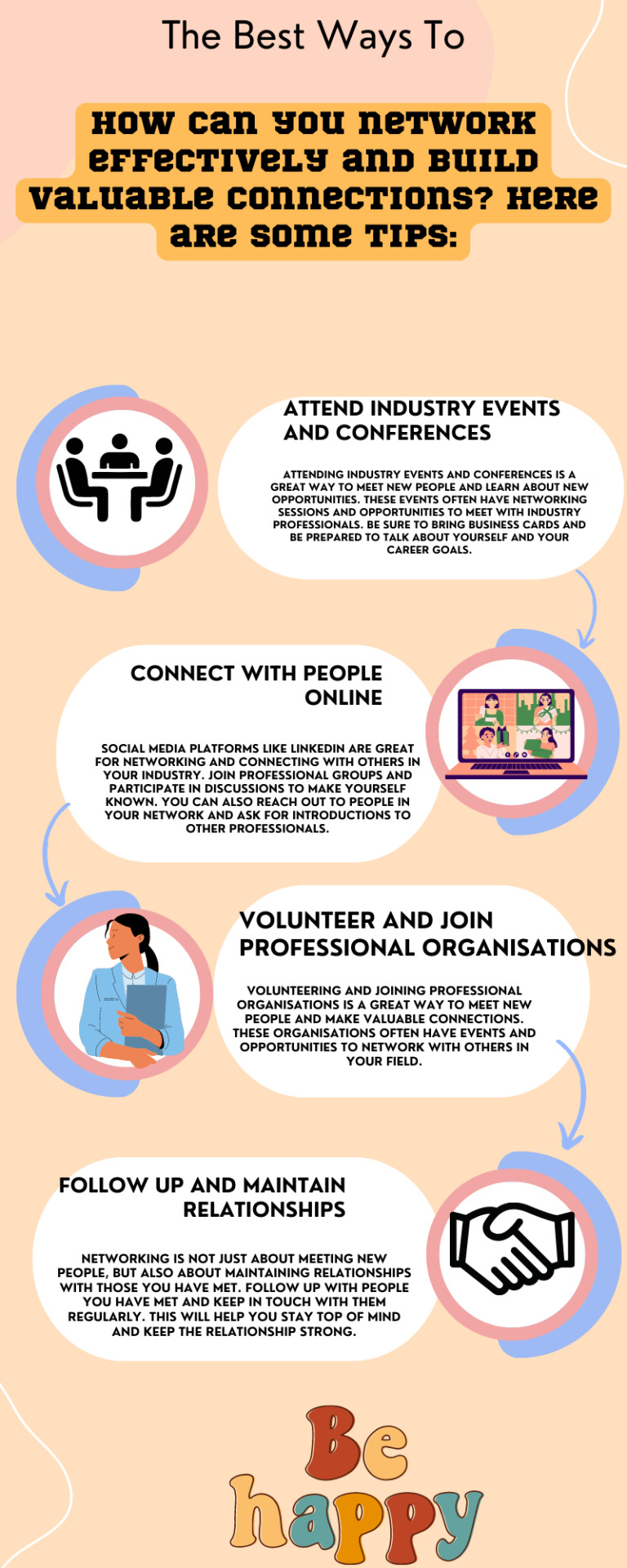
Networking is an essential part of career development and personal growth. It allows individuals to build relationships and connections with others in their industry, expand their knowledge and skills, and increase their visibility and opportunities.
However, networking can often be intimidating and overwhelming for many people, especially those who are new to the job market or are introverted by nature. That's why it's important to understand why networking is important and how to do it right.
Here are some reasons why networking is crucial for your career:
It helps you learn about new job opportunities
Networking allows you to learn about job openings and career opportunities that may not be advertised publicly. By building relationships with professionals in your industry, you can get insider information about potential job openings, company culture, and what skills and qualifications are necessary for certain roles.
It increases your visibility and credibility
Networking helps you get noticed by potential employers and clients. By building a strong network of professional connections, you increase your visibility and credibility in your industry. This can lead to more job opportunities and more business for your company.
It helps you develop new skills and knowledge
Networking allows you to learn from and collaborate with others in your field. You can learn about new trends and techniques, as well as gain valuable insights and advice from experienced professionals. This helps you stay current and competitive in your industry.
It can lead to valuable partnerships and collaborations
Networking can lead to valuable partnerships and collaborations with others in your industry. By building relationships with others, you can work together on projects and ventures that can benefit both parties.
1 note
·
View note
Text
How to Become a Billionaire

It takes time to become a billionaire
How long does it take to become a billionaire? As most people know, attaining a billionaire status could take a lifetime. While there are a few exceptions, most billionaires have not made their fortune overnight. Instead, they have slowly and steadily built their wealth over time.
For many billionaires, their journey to becoming wealthy began with a single entrepreneurial endeavor. They took a risk and it paid off. From there, they reinvested their earnings and continued to grow their businesses. As their businesses flourished, so did their bank accounts.
Education is essential, but it isn’t always necessary
It is often said that education is the key to success. While there is no denying that a good education can open doors, it is certainly not a prerequisite for becoming a billionaire. In fact, many of the world’s richest people have little formal schooling to their name.
For example, Bill Gates and Mark Zuckerberg are both college dropouts from Harvard University. These men went on to become two of the most successful entrepreneurs in history, each amassing a fortune that exceeds $100 billion. Zuckerberg is currently the third on the list of Californian billionaires, while Gates is the world’s fourth wealthiest person according to Forbes’ list of billionaires.
Many occupations in technology, finance, or real estate may pay off handsomely
For many people, the key to a successful career is choosing the right industry. While there are many rewarding fields to choose from, three of the industries with the most millionaires are tech, finance, and real estate.
These industries offer high salaries, plenty of room for advancement, and exciting work environments. Of course, these industries are also highly competitive.
It’s good to have family support, but it isn’t vital
There are a few billionaires in the world that have come from wealthy families and have had assistance along the way, but most self-made billionaires have come from humble beginnings. In fact, many of them credit their success to the fact that they didn’t have family assistance.
Relentless pursuit of wealth
Another thing that all billionaires have in common is their relentless pursuit of wealth. They are constantly looking for new opportunities to make money and come up with innovative ways how they can grow the businesses that generate revenue for them.
The Do’s and Don’ts in Becoming a Billionaire
Billionaires are a rare breed. If you want to join their ranks, there are certain Dos and Don’ts you should know about.
#billionaire#how to#i became a millionaire from my side hustle after quitting my corporate job just seven months after graduating
0 notes
Text
3 notes
·
View notes
Text
types of digital marketing
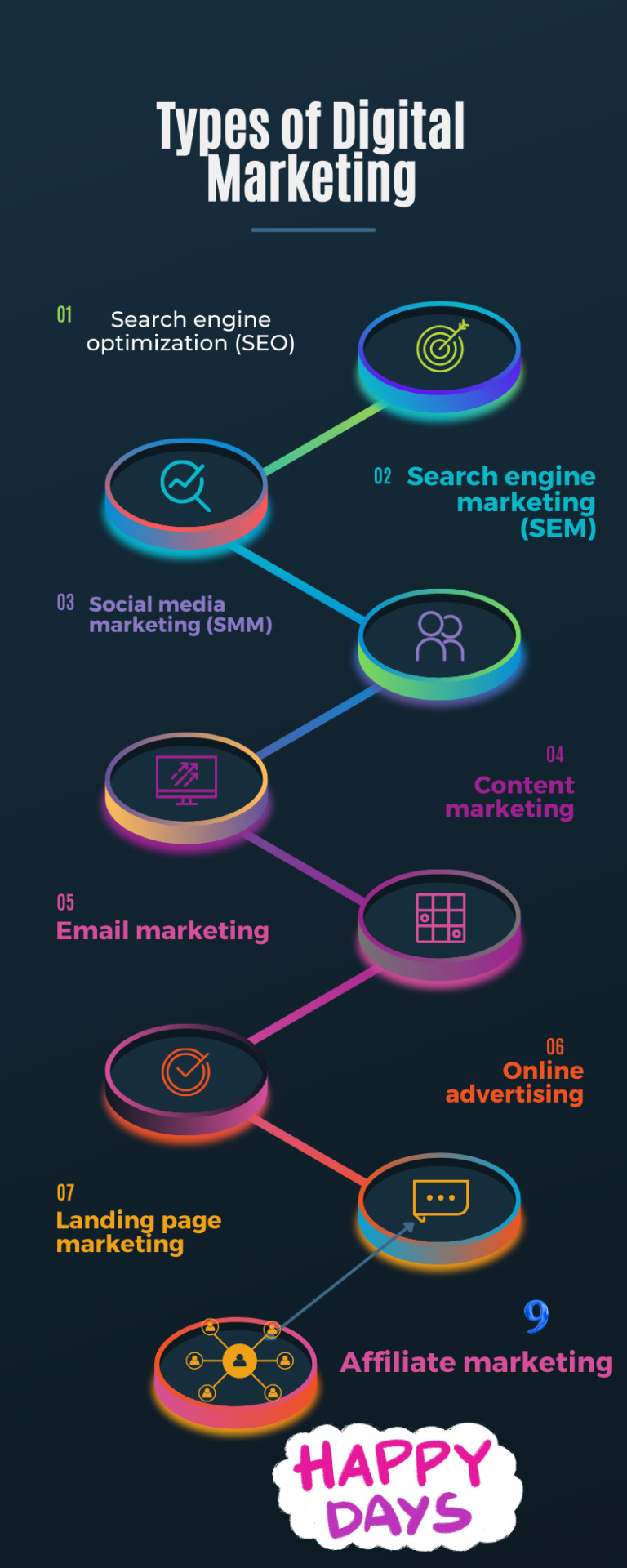
What is Digital Marketing?
But first, let’s answer the question, “What is digital marketing?”
Digital marketing is an area of marketing that focuses on promoting a business or brand via various online channels. Like any other form of marketing, digital marketing aims to increase brand awareness and sales.
Importance of Digital Marketing in the Digital Age
These days, merely having a website is not enough if you want to get qualified leads.
You also need to be visible on as many types of digital marketing platforms as possible, from search engines to social media sites and video platforms. If your business doesn’t have any online presence on at least 2 digital platforms, then you’re missing out on a big opportunity to reach your target audience.
To build a successful online or local business and stand out from the crowd, you need a comprehensive digital strategy based on a thorough market study, in-depth business analysis, and constant feedback.
Types of Digital Marketing
Ideally, you should use a mix of different types of digital marketing in order to reach your audience through the various channels that they are using.
In this article, we have collected the most commonly used types of digital marketing that can help you achieve the highest success rate. They are as follows:
4 notes
·
View notes
Text
FREELANCING TIPS

#Starting a freelance business can be highly rewarding. You work for yourself as your own boss#when you want#and where you want.#Since the 2020 pandemic#the number of freelancers has increased#many of whom have been disillusioned by the nine-to-five life.#But making it solo isn’t as easy as it might seem.#New freelancers have to work hard to set up a client base and earn a good income. As a result#it could take weeks or months before you develop a decently sized clientele.#For that reason#we’re going to give you six freelancing tips for beginners to help you get started. These freelancer tips can serve as the foundation for
6 notes
·
View notes